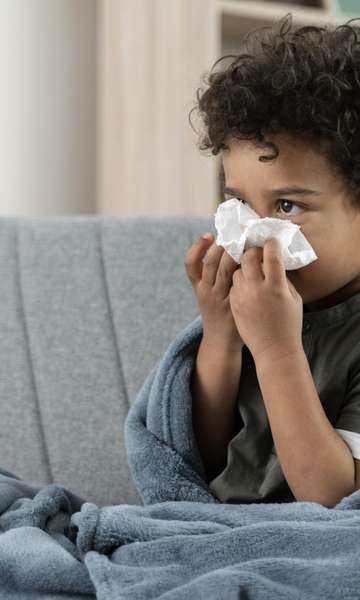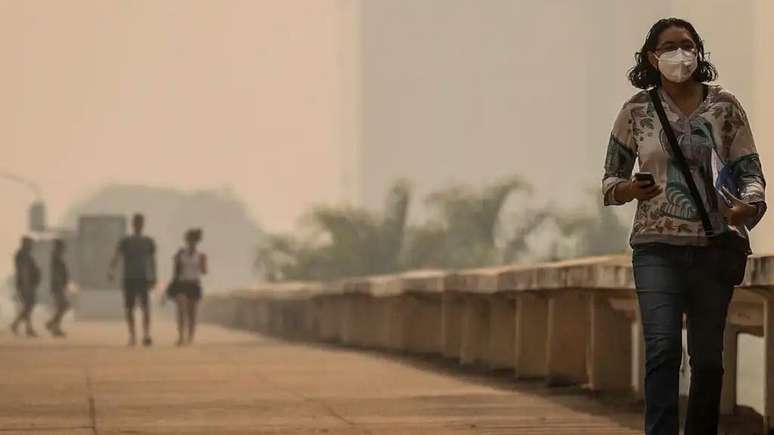Brazil is affected by fires and being well informed to protect yourself is essential.
In recent weeks, Brazil has been hit by devastating fires in the interior of the state of São Paulo and also in other regions, such as the Amazon rainforest, which are spreading from the north to the south of the country. These fires have worsened the air quality in the region and also in the capitals of the country such as São Paulo, Goiânia, Brasilia and Belo Horizonte.
With the contaminated air recordings, many people have reported respiratory problems, burning eyes, dry cough and throat irritation.
In an interview with Earth youPulmonologist Michele Andreata, from Saúde no Lar, explains how this smoke can harm your health and what to do to protect yourself.
How does wildfire smoke affect human health?
The pulmonologist says that exposure to air polluted by smoke and soot, especially for prolonged periods, can cause a number of health problems, including:
- Airway irritation;
- Exacerbation of pre-existing respiratory diseases, such as asthma and COPD (Chronic Obstructive Pulmonary Disease);
- Increased risk of respiratory infections;
- Cough;
- Difficulty breathing;
- Eye and throat irritation.

Cigarettes, Vaporizers, Flash Drives, and More: Which Smoke Is More Harmful?
How to protect yourself from fires?
The Ministry of Health recommends the following guidelines to the population:
• Increasing your water and fluid intake helps keep your respiratory membranes moist and, therefore, more protected;
• Reduce exposure times as much as possible, recommending staying indoors, in a ventilated place, with air conditioning or air purifiers;
• Doors and windows should remain closed during periods of high particle concentrations, to reduce the penetration of external pollution;
• Avoid physical activities during hours of high concentration of air pollutants and between 12:00 and 16:00, when ozone concentrations are highest;
• The use of “surgical” type masks, fabrics, scarves or bandanas can reduce exposure to coarse particles, especially for populations living near the emission source (fireplaces) and, therefore, improve upper airway discomfort. While the use of N95, PFF2 or P100 type respiratory masks is suitable for reducing the inhalation of fine dust by the entire population;
• Children under 5 years old, elderly people over 60 years old and pregnant women should pay special attention to the recommendations described above for the general population. In addition, they should be aware of respiratory symptoms or other health problems and consult a doctor as soon as possible.
People with cardiac, respiratory, immunological problems, among others, should:
• Contact your doctor to update your treatment plan;
• Keep medicines and items prescribed by your doctor available in case of acute crises;
• Contact your doctor if you experience seizure symptoms;
• Assess the need and safety of temporarily abandoning the area affected by the seasonality of fires.

What is the difference between flu and cold?
What to do if you are hit by fires
For those who have been exposed to polluted air this weekend, it is worth paying attention to some early symptoms that may indicate lung problems caused by constant exposure to these pollutants, including:
- Persistent cough;
- Feeling of tightness in the chest;
- Shortness of breath;
- Wheezing (wheezing);
- Irritation of mucous membranes, such as eyes and throat.
Prolonged exposure may also cause extreme tiredness, worsening of chronic respiratory conditions, and increased frequency of respiratory infections.
Continuous exposure to smoke and soot can also lead to the development of acute bronchitis, exacerbation of asthma and COPD, chemical pneumonitis, and in the long term can increase the risk of chronic respiratory diseases and even cardiovascular diseases.
“Furthermore, there is a correlation between exposure to air pollutants and an increased risk of lung cancer,” adds the pulmonologist.
The doctor explains that the body can eliminate some of the inhaled particles, especially in healthy individuals, through natural defense mechanisms, such as coughing and mucociliary clearance.
However, long-term damage, especially in people with chronic respiratory conditions, can persist. “If respiratory symptoms persist after exposure ends or if a pre-existing condition worsens, it is essential to seek medical attention as soon as possible for proper evaluation and possible treatment,” he concludes.
Source: Terra
Ben Stock is a lifestyle journalist and author at Gossipify. He writes about topics such as health, wellness, travel, food and home decor. He provides practical advice and inspiration to improve well-being, keeps readers up to date with latest lifestyle news and trends, known for his engaging writing style, in-depth analysis and unique perspectives.








